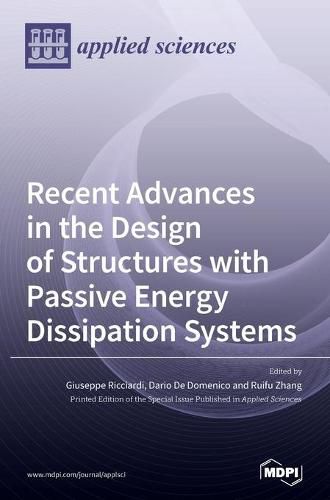Readings Newsletter
Become a Readings Member to make your shopping experience even easier.
Sign in or sign up for free!
You’re not far away from qualifying for FREE standard shipping within Australia
You’ve qualified for FREE standard shipping within Australia
The cart is loading…






This title is printed to order. This book may have been self-published. If so, we cannot guarantee the quality of the content. In the main most books will have gone through the editing process however some may not. We therefore suggest that you be aware of this before ordering this book. If in doubt check either the author or publisher’s details as we are unable to accept any returns unless they are faulty. Please contact us if you have any questions.
Passive vibration control plays a crucial role in structural engineering. Common solutions include seismic isolation and damping systems with various kinds of devices, such as viscous, viscoelastic, hysteretic, and friction dampers. These strategies have been widely utilized in engineering practice, and their efficacy has been demonstrated in mitigating damage and preventing the collapse of buildings, bridges, and industrial facilities. However, there is a need for more sophisticated analytical and numerical tools to design structures equipped with optimally configured devices. On the other hand, the family of devices and dissipative elements used for structural protection keeps evolving, because of growing performance demands and new progress achieved in materials science and mechanical engineering. This Special Issue collects 13 contributions related to the development and application of passive vibration control strategies for structures, covering both traditional and innovative devices. In particular, the contributions concern experimental and theoretical investigations of high-efficiency dampers and isolation bearings; optimization of conventional and innovative energy dissipation devices; performance-based and probability-based design of damped structures; application of nonlinear dynamics, random vibration theory, and modern control theory to the design of structures with passive energy dissipation systems; and critical discussion of implemented isolation/damping technologies in significant or emblematic engineering projects.
$9.00 standard shipping within Australia
FREE standard shipping within Australia for orders over $100.00
Express & International shipping calculated at checkout
This title is printed to order. This book may have been self-published. If so, we cannot guarantee the quality of the content. In the main most books will have gone through the editing process however some may not. We therefore suggest that you be aware of this before ordering this book. If in doubt check either the author or publisher’s details as we are unable to accept any returns unless they are faulty. Please contact us if you have any questions.
Passive vibration control plays a crucial role in structural engineering. Common solutions include seismic isolation and damping systems with various kinds of devices, such as viscous, viscoelastic, hysteretic, and friction dampers. These strategies have been widely utilized in engineering practice, and their efficacy has been demonstrated in mitigating damage and preventing the collapse of buildings, bridges, and industrial facilities. However, there is a need for more sophisticated analytical and numerical tools to design structures equipped with optimally configured devices. On the other hand, the family of devices and dissipative elements used for structural protection keeps evolving, because of growing performance demands and new progress achieved in materials science and mechanical engineering. This Special Issue collects 13 contributions related to the development and application of passive vibration control strategies for structures, covering both traditional and innovative devices. In particular, the contributions concern experimental and theoretical investigations of high-efficiency dampers and isolation bearings; optimization of conventional and innovative energy dissipation devices; performance-based and probability-based design of damped structures; application of nonlinear dynamics, random vibration theory, and modern control theory to the design of structures with passive energy dissipation systems; and critical discussion of implemented isolation/damping technologies in significant or emblematic engineering projects.